#zhuyin fuhao
Explore tagged Tumblr posts
Text
I bought a bluetooth keyboard in Taiwan and thought it was so fascinating how it's labelled for 4 different input methods. It's a very cool and unique souvenir!
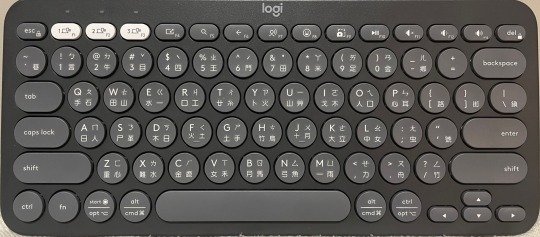
Obviously there's the Latin alphabet (QWERTY) in the top left, zhuyin fuhao/bopomofo in the top right, and I figured one of the bottom ones was Cangjie. What the fourth could be was a mystery to me.
After some quick searching, I learned that Cangjie is in the bottom left, and the bottom right is the Dayi input method, which I've never even heard of. Here is a better look.
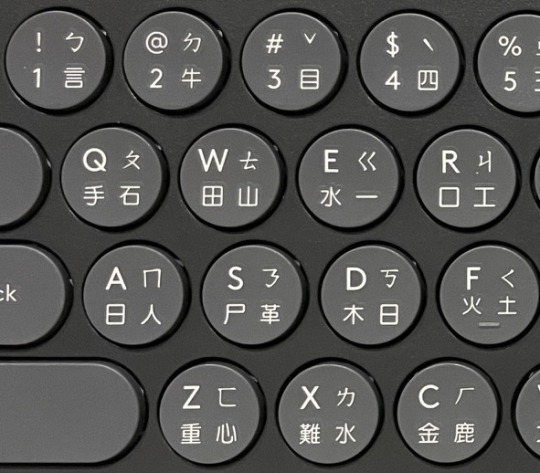
So far I have only used this keyboard to type in English or Chinese with the pinyin input method, but I’ll have to experiment with one of the other ones sometime—probably bopomofo since I am more familiar with it.
Out of curiosity, I looked up what a Taiwanese MacBook keyboard looks like, and it only has the Latin alphabet and zhuyin. So the 4-in-1 style isn't universal it seems.
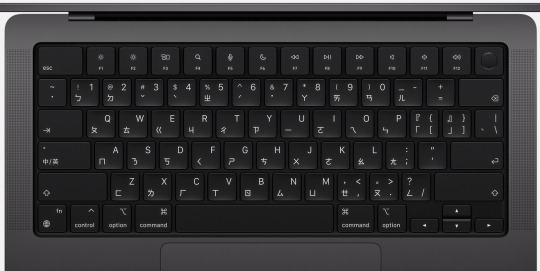
#culture stuff#keyboard#keyboard layout#bopomofo#zhuyin#zhuyin fuhao#cangjie#dayi#input method#chinese#mandarin#mandarin chinese#chinese language#studyblr#langblr#learning languages#language learning#chinese langblr#mandarin langblr#languageblr
221 notes
·
View notes
Note
We should make USians write English in zhuyin fuhao
pinyin at the least. hǎo er yù dú'ín?
74 notes
·
View notes
Text
'Necro what's one of the other methods for typing Chinese characters?'
Bopomofo aka zhuyin fuhao... Which probably isn't as bad as it seems, and I should learn it at some point, but it intimidates me. Maybe if I was more familiar with it, it would be easier to imagine how the trolls could use it, but hey.

Traditional Chinese Translation of Homestuck Analysis-Beta Troll Typing Quirks
That's right, there's a full traditional Chinese translation of Homestuck. You can find it, along with links to other translations, here. If you want to jump to Hivebent when all the beta trolls are officially introduced so you can see this for yourself, here's a link to the first page.
But first, I'll give as succinct of a rundown of the elements of the Chinese language that are relevant as I can. The Chinese writing system doesn't have an alphabet, instead words all have unique characters. So a lot of the trolls' quirks just can't be 'transliterated', because they have something to do with spelling. Similarly, Chinese characters don't have upper or lower cases.
There are multiple ways to type Chinese on an electronic device, but the most common is using a Latin script keyboard. You type out the pinyin of a Chinese character (which is the system mostly commonly used to romanize Mandarin Chinese nowadays) and some suggestions for characters with pinyin romanizations spelled that way pop up in a little window, and then you pick the one that you want.
Chinese also has A LOT of homophones because instead of making a wider variety of noises like English, Chinese opted to differentiate words partially based on the tone they're spoken in. This is absolutely fantastic for puns and wordplay, English could never hope to be anywhere near Chinese's level in that regard. This comes into play with some of the trolls' typing quirks.
And just to clarify, sometimes I say 'Chinese' and sometimes I say 'Mandarin', that's because Mandarin is the official dialect in both mainland China and Taiwan and now the mostly widely spoken one in the world. It isn't mutually intelligible with most other Chinese dialects (this is part of why some people argue that Chinese isn't a single language but a language family). However, written Chinese can generally be understood regardless of the dialect you speak, even if people speaking in different dialects often have different ways of saying the same thing, like greetings and whatnot. When I say Chinese I mean things that broadly apply to written Chinese or the Chinese language/language family as a whole, when I say Mandarin I mean things specific to the Mandarin dialect. I think that about covers it. This post is already getting a bit long so I'll put everything else under a cut. Here's the breakdown:
Aradia: Replaces characters with the Arabic numeral for zero 0. I looked it up and apparently the Chinese character for zero also carry connotations of negation or mean things like 'nought' or 'no', which seems to fit with at least most of the instances she uses it in. Apparently this character can also have some link to death and dead spirits, which would fit given how she's a ghost at the beginning of the story.
Tavros: Uses the character 呃 a lot, which can be used like 'uh' or 'eh'. Uses 嗯 which can be used like 'hmm' or 'uh' as well, or like a general mumbling/light groaning sound, but with less frequency. Still, types haltingly, and uses commas, a lot, like in English, without any periods, Since Chinese doesn't have upper or lower cases, Tavros cANT DO THAT THING HE DOES IN ENGLISH, WHERE HE TYPES IN ALL CAPS OTHER THAN, THE FIRST LETTER OF SENTENCES, sO UNFORTUNATELY, there isn't a lot else to say here.
Sollux: Still refers to the others by their nicknames like KK and AA. He uses reduplication more often that most of the others, which is when you repeat part of a word or even a whole word for various reasons, often to stress your point. He also replaces characters that are pronounced as 'shi' in Mandarin with the Chinese character for 4, which is pronounced as 'si' and written as 四. I'm pretty sure this is supposed to be reminiscent of his lisp. EDIT: AS @autumntides reminded me, in at least Mandarin and Cantonese four is a homophone with death, and thus it carries the stigma of death and unluckiness. This fits in well with Sollux's mage of doom class and everything related to it, like Vriska mind controlling him to kill Aradia and him dying during the vast glub because he didn't make it into the game in time before Feferi revived him. I still think it's also the lisp, though.
Karkat: He doesn't type in a larger font size then the others so he doesn't really have any typing quirks, at least none I've been able to ascertain, but he's just as imaginative with his cursing. It can be pretty rough for me to parse and equally rough to translate into English in a way that doesn't sound really awkward, but one of my favorites is 'Rotten bloated corpse of God Almighty! Goddammit, what the fuck does your pockmarked think stem want?'
Nepeta: Uses onomatopoeias that equate to 'cat sounds' like meow and roar, as well as a good bit of reduplication. Still uses asterisk marks and speaks in the third person to indicate when she's role-playing.
Kanaya: Doesn't use punctuation. That's it, since she can't capitalize things like she does in English. I really wish I could say more but that's all I can see. She's still verbose, though.
Terezi: Replaces words that are homophones or near homophones with the numbers 1, 3, and 4 in Mandarin with their Arabic numerals, presumably to resemble how she types in leetspeak in English.
Vriska: Still types out characters 8 times occasionally, but rather than letters (since the Chinese writing system doesn't have an alphabet) it's the whole 'word' like 月月月月月月月月. Replaces words that are homophones (or almost homophones) with 'eight' in Mandarin with the Chinese character for 8 八. I'm pretty sure it's meant to signify that she's dragging the word out rather than repeating it, like when she does thiiiiiiiis in English.
Equius: Still uses % like X's, but he just types it and then types out the word. Again, I don't know exactly what kind of keyboard he's using, but if he's using a Latin script keyboard, he's just typing things like %xuan but when he's finished typing it looks like this %選.
Gamzee: Types out every other character in a slightly smaller font size then the default, he's the only one that changes his font size to resemble his English typing quirk. I'm guessing/hoping they have a set up where he can just as easily change font size as Latin script keyboards can change between lower and uppercase by hitting a certain button, but who knows. He uses ta ma de 他媽的 a lot, which is pretty much the Chinese equivalent of 'motherfucker/motherfucking', and cao 操, which is just 'fuck' but the verb.
Eridan: Still refers to the others by their nicknames like Fef and Kan. A lot of reduplication. A LOT of it, way more than Sollux or Nepeta even. I think this is supposed to be reminiscent of how he doubles his Vs and Ws in English rather then symbolizing true grammatical reduplication, though. It also seems to be that his specific flavor of reduplication is like Vriska's, it's meant to signify he's dragging the sound of a word out rather than repeating it. He also types ~ right after reduplication, seemingly to resemble the waves on the ocean and that he's sort of saying it in a 'wavy' manner, like how in English the comic remarks that he has a 'really weird kinda wavy sounding accent'. Honestly it's annoying to look at, and other Chinese speakers have told me the same thing when they saw how he types. Maybe that was intentional?...
Feferi: She does the same thing as Equius does with X but uses ) ( in front of words whose pinyin romanization starts with H. Uses 'gulu' in the place of 'glub' as transliteration. Replaces characters like those for 'is' 是 and 'have' 有 for characters that have that character in it but also have the character for fish 魚 like 鯷 and 鮪. Also occasionally uses ------ before characters, I think it's meant to symbolize that she's saying something excitedly.
And there you have it. This was rough and took a lot of time, but it was fun if at times deeply frustrating. I may do more of these posts comparing the Chinese translation to the original English, I'm particularly interested in the alpha trolls, but who knows. If you enjoyed this I'd greatly appreciate you sharing it :)
393 notes
·
View notes
Text
Lyrics Zhùyīn Fúhào Limi 我的夜晚是不是你的白天


3 notes
·
View notes
Text
A Password Brain Teaser With an Unexpected Snag
In today's blog post, we ponder password security and look at a password brain teaser!
[Image courtesy of The Next Web.]
One of the curious aspects of being a modern Internet user is figuring out how to manage your passwords. Most sites, whether commercial or recreational, have log-in screens or other account info, and it’s up to you to remember passwords for these numerous accounts.
You could use the same password over and over for everything, but that’s not a terribly safe…
View On WordPress
#Brain teaser#cryptosecurity#DIY puzzling#Geeking Out#Gizmodo#mandarin#Mira Modi#my password#password#Pop culture#PuzzleNation#Puzzlin&039; fool#rhett jones#safety#security#transliteration#Wordplay#zhuyin fuhao
1 note
·
View note
Text
It's already pretty tricky to record the changes of them especially in the absence of written records for spoken & written languages, but it's even more so when its a sign language at hand. As for last reblog's example, the last writing for the lady's is called Nüshu/Nvshu (hiragana was once used for such a purpose & was once known as onnade, with the men's writing in kanji & katakana [both would much later would be paralleled in ruby text uses in such ways as Chosongul/Hangul & Zhuyin Fuhao/Bopomofo] being known in parallel as otokode). Anyway, village sign languages & other sign languages come up just like their spoken counterparts independently of each other although they may be bridged in some way, but it'd be all the more reason to describe them in some way such as in drawn form to supplement what may be missing in writing down the spoken language forms.
sometimes i think about village sign languages and. man…
18K notes
·
View notes
Note
Could the zhuyin fuhao be updated? The ㄖseems to be listed as 蜘蛛 instead of 日 or something. Very cute fuhaos otherwise. Thank you for sharing.
I have no idea what post this is about, y’all gotta include some kind of something. I don’t personally know bopomofo that well so I imagine this is also not an originally me post? ㄖ is a sound symbol for ‘r’, whereas those are both hanzi what’s going on ¯\_(ツ)_/¯
while we’re on the topic: if yr trying to learn 注音符號 (zhuyin fuhao) here are some cute mnemonic worksheets
#ask#bopomofo#I'm still a moving mess the shippers just came today and I fly out wednesday#not that I'll ever get my shit together hahaaaa#I'm hoping my new job is less soul crushing so I have more energy to langauge
11 notes
·
View notes
Link
[...] The password is coming from the Zhuyin Fuhao system for transliterating Mandarin. The reason it’s showing up fairly often in a data breach repository is because “ji32k7au4a83" translates to English as “my password.”
ji3 -> 我 -> M
2K7 -> 的 -> Y
au4 -> 密 -> PASS
a83 -> 碼 -> WORD
0 notes
Photo
Um.... we have zhuyin fuhao for Chinese
https://en.wikipedia.org/wiki/Bopomofo

9K notes
·
View notes
Text
How I'm learning bopomofo (zhuyin fuhao)
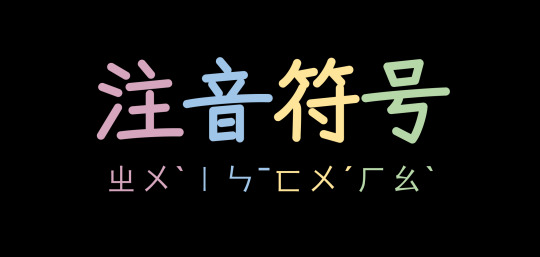
Why am I learning bopomofo?
Maybe around a year ago, I had a dream in which I was in a library/bookstore in Taiwan. I was trying to search their catalog to see if they had a book I wanted in stock. The only option was a bopomofo touchscreen keyboard, and I became quite distressed because I was unable to type anything. This dream inspired me to learn bopomofo, AKA zhuyin fuhao.
Why should you learn bopomofo?
Frankly, the consensus I've seen on blogs and language forums is that you don't need to learn bopomofo/zhuyin fuhao. But I wanted to share my thoughts on what there is to gain from learning it. Consider learning bopomofo if...
You find pinyin unintuitive or are looking for another input method for typing. I learned pinyin very young, so it's second nature for me. But for some learners, it's difficult and may distract them from reading characters. Bopomofo offers an alternative.
You're really interested in Taiwanese culture and want to deepen your understanding of it. My Taiwanese American friend tells me that you can find bopomofo in materials like children's books. I've also seen it used online, such as in it memes by Taiwanese netizens.
You're a total language nerd and think it would be fun. It's been a fun challenge to learn something completely new to me after so many years of learning Chinese. It's forced me to reexamine the language and how pinyin works too!
How I'm learning bopomofo
My method is nothing fancy. First, I wrote down all the symbols my notebook and practiced converting syllables from pinyin to zhuyin fuhao. After that, I added the zhuyin keyboard to my phone and switched to practicing via typing.
As you may or may not know, I'm kind of obsessed with chengyu and try to learn a new one each day. So I practice typing with zhuyin fuhao daily by typing out my new chengyu of the day.
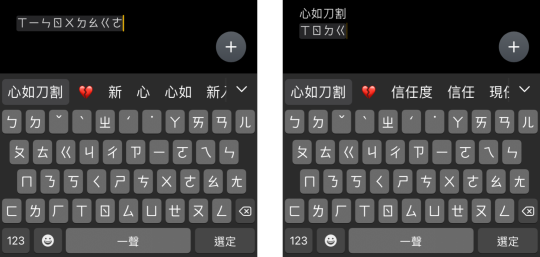
*Technically you are supposed to type the tone marks too, but I'm lazy and usually don't do that. **Like with the pinyin keyboard, you can also input text by just typing the initials.
The downside of my method is that I fear I'm memorizing positions on the keyboard instead of the actual symbols. If you as me to read something written in zhuyin, I would need some time to decipher it. But I actually tried learning zhuyin previously using flashcards, and it didn't stick at all. So this typing method, while flawed, has worked for me because I've been able to practice consistently—a little bit every day!
I don't think I can write zhuyin out by hand, but I don't have to worry about my bad dream coming true anymore!
#my learning#bopomofo#zhuyin#zhuyin fuhao#注音符号#注音#注音符號#chinese#mandarin#mandarin chinese#chinese language#studyblr#langblr#language study#learning languages#language learning#chinese studyblr#chinese langblr#mandarin studyblr#mandarin langblr#study chinese#study mandarin#learn chinese#learn mandarin#studying chinese#learning chinese#studying mandarin#learning mandarin#languages#language blog
169 notes
·
View notes
Text
a familiar taste By Yong-Yu Huang
a familiar taste By Yong-Yu Huang
a familiar taste
for the childhood that could have been
i could have stayed and learned zhuyin fuhao until i could feel the soft cadences under my tongue even in sleep. what should have come to me as easily as singing the ABCs now require thought––and I feel cheated of a birthright.
i try my best to fashion a replacement with sweating fingers and a cottony tongue, but I am no artisan, no…
View On WordPress
0 notes
Text
“Zhuyin fuhao (Chinese: 注音符號; pinyin: Zhùyīn fúhào), Zhuyin (Chinese: 注音), Bopomofo (ㄅㄆㄇㄈ) or Mandarin Phonetic Symbols is the major Chinese transliteration system for Taiwanese Mandarin... The informal name ‘Bopomofo’ is derived from the first four syllables in the conventional ordering of available syllables in Mandarin Chinese.”
Zhuyin and how to use it
Zhuyin is a type of input method for traditional characters.
initials:
ㄅ b
ㄆ p
ㄇ m
ㄈ f
ㄉ d
ㄊ t
ㄋ n
ㄌ l
ㄍ g
ㄎ k
ㄏ h
ㄐ j
ㄑ q
ㄒ x
ㄓ zh
ㄔ ch
ㄕ sh
ㄖ r
ㄗ z
ㄘ c
ㄙ s
finals:
ㄚa
ㄛ o
ㄜ e
ㄞ ai
ㄟ ei
ㄠ ao
ㄡ ou
ㄢ an
ㄣ en
ㄤ ang
ㄥ eng
ㄦ er
ㄧ i/yi
ㄨ u/wo
ㄩ ü/u/yu
ex. 你 (ㄋㄧˇ or nǐ), 我 (ㄨㄛˇ, or wǒ)
109 notes
·
View notes
Text
ji32k7au4a83 là một mật khẩu dễ nhận biết
https://vipub.co/2NJGrdL
ji32k7au4a83 là một mật khẩu dễ nhận biết
Mật khẩu ji32k7au4a83 có thể trông khá an toàn nhờ các chữ cái và số dường như ngẫu nhiên. Nhưng thật đáng ngạc nhiên, mật khẩu chính xác đó đã xuất hiện trong 141 lần vi phạm dữ liệu, như được phân loại bởi trang web Im I pwned và phát hiện bởi Gizmodo. Nó dẫn đến một câu hỏi rõ ràng: làm thế nào nhiều người sử dụng một mật khẩu này?
Robert Ou, một kỹ sư phần cứng và phần mềm, phát hiện đầu tiên chuỗi ký tự thú vị này và thách thức mọi người tìm hiểu tại sao ji32k7au4a83 lại được sử dụng phổ biến đến vậy. Người dùng internet Đài Loan đã nhanh chóng giải mã câu trả lời. Họ lưu ý rằng trên một bàn phím Đài Loan có bố cục Zhuyin Fuhao, chuỗi đánh vần là 我 的, hoặc khăn wǒ de mìmǎ, nghĩa là My Password trong tiếng Quan Thoại.
Trong khi ji32k7au4a83 (mật khẩu mật khẩu của tôi) đã xuất hiện trong 141 lần vi phạm dữ liệu, au4a83 (có nghĩa là mật khẩu) đã hiển thị 1.495 lần. Bài học ở đây là ngay cả khi bạn sử dụng bàn phím tùy chỉnh tạo ra các chuỗi chữ cái và số có thể làm bí ẩn nhiều người nói tiếng Anh, sử dụng một cái gì đó tương đương với mật khẩu của mật khẩu vì mật khẩu của bạn vẫn là một ý tưởng tồi. Ai đó ngoài kia sẽ biết chính xác những gì bạn đang cố gắng làm.
0 notes
Video
youtube
Here’s part two of the Bopomofo / Zhuyin Fuhao series. Watch if you want to know how to form whole wrods using Zhuyin Fuhao with initials, finals, and tones.
9 notes
·
View notes
Link
Notes about how to handle bopomofo (zhuyin fuhao) on the Web.
I hope to see more integration of Zhuyin into Chinese languages, get that literacy rate up :)
1 note
·
View note
Photo

handy pinyin-bopomofo chart with some articulation detail thrown in. I am realizing that learning bopomofo may not have been all that wise since I’ll probably only use it for typing, but eh it was satisfying. Also systems of phonetization (is that a word?) are so cooool. Can use learning stuff from Taiwan now I guess.
13 notes
·
View notes